Contents
Foreword by Raymie Stata
Foreword by Paul Dix
Preface
Acknowledgments
About the Authors
1 Apache Hadoop YARN: A Brief History and Rationale
Introduction
Apache Hadoop
Phase 0: The Era of Ad Hoc Clusters
Phase 1: Hadoop on Demand
HDFS in the HOD World
Features and Advantages of HOD
Shortcomings of Hadoop on Demand
Phase 2: Dawn of the Shared Compute Clusters
Evolution of Shared Clusters
Issues with Shared MapReduce Clusters
Phase 3: Emergence of YARN
Conclusion
2 Apache Hadoop YARN Install Quick Start
Getting Started
Steps to Configure a Single-Node YARN Cluster
Step 1: Download Apache Hadoop
Step 2: Set JAVA_HOME
Step 3: Create Users and Groups
Step 4: Make Data and Log Directories
Step 5: Configure core-site.xml
Step 6: Configure hdfs-site.xml
Step 7: Configure mapred-site.xml
Step 8: Configure yarn-site.xml
Step 9: Modify Java Heap Sizes
Step 10: Format HDFS
Step 11: Start the HDFS Services
Step 12: Start YARN Services
Step 13: Verify the Running Services Using the Web Interface
Run Sample MapReduce Examples
Wrap-up
3 Apache Hadoop YARN Core Concepts
Beyond MapReduce
The MapReduce Paradigm
Apache Hadoop MapReduce
The Need for Non-MapReduce Workloads
Addressing Scalability
Improved Utilization
User Agility
Apache Hadoop YARN
YARN Components
ResourceManager
ApplicationMaster
Resource Model
ResourceRequests and Containers
Container Specification
Wrap-up
4 Functional Overview of YARN Components
Architecture Overview
ResourceManager
YARN Scheduling Components
FIFO Scheduler
Capacity Scheduler
Fair Scheduler
Containers
NodeManager
ApplicationMaster
YARN Resource Model
Client Resource Request
ApplicationMaster Container Allocation
ApplicationMaster–Container Manager Communication
Managing Application Dependencies
LocalResources Definitions
LocalResource Timestamps
LocalResource Types
LocalResource Visibilities
Lifetime of LocalResources
Wrap-up
5 Installing Apache Hadoop YARN
The Basics
System Preparation
Step 1: Install EPEL and pdsh
Step 2: Generate and Distribute ssh Keys
Script-based Installation of Hadoop 2
JDK Options
Step 1: Download and Extract the Scripts
Step 2: Set the Script Variables
Step 3: Provide Node Names
Step 4: Run the Script
Step 5: Verify the Installation
Script-based Uninstall
Configuration File Processing
Configuration File Settings
core-site.xml
hdfs-site.xml
mapred-site.xml
yarn-site.xml
Start-up Scripts
Installing Hadoop with Apache Ambari
Performing an Ambari-based Hadoop Installation
Step 1: Check Requirements
Step 2: Install the Ambari Server
Step 3: Install and Start Ambari Agents
Step 4: Start the Ambari Server
Step 5: Install an HDP2.X Cluster
Wrap-up
6 Apache Hadoop YARN Administration
Script-based Configuration
Monitoring Cluster Health: Nagios
Monitoring Basic Hadoop Services
Monitoring the JVM
Real-time Monitoring: Ganglia
Administration with Ambari
JVM Analysis
Basic YARN Administration
YARN Administrative Tools
Adding and Decommissioning YARN Nodes
Capacity Scheduler Configuration
YARN WebProxy
Using the JobHistoryServer
Refreshing User-to-Groups Mappings
Refreshing Superuser Proxy Groups Mappings
Refreshing ACLs for Administration of ResourceManager
Reloading the Service-level Authorization Policy File
Managing YARN Jobs
Setting Container Memory
Setting Container Cores
Setting MapReduce Properties
User Log Management
Wrap-up
7 Apache Hadoop YARN Architecture Guide
Overview
ResourceManager
Overview of the ResourceManager Components
Client Interaction with the ResourceManager
Application Interaction with the ResourceManager
Interaction of Nodes with the ResourceManager
Core ResourceManager Components
Security-related Components in the ResourceManager
NodeManager
Overview of the NodeManager Components
NodeManager Components
NodeManager Security Components
Important NodeManager Functions
ApplicationMaster
Overview
Liveliness
Resource Requirements
Scheduling
Scheduling Protocol and Locality
Launching Containers
Completed Containers
ApplicationMaster Failures and Recovery
Coordination and Output Commit
Information for Clients
Security
Cleanup on ApplicationMaster Exit
YARN Containers
Container Environment
Communication with the ApplicationMaster
Summary for Application-writers
Wrap-up
8 Capacity Scheduler in YARN
Introduction to the Capacity Scheduler
Elasticity with Multitenancy
Security
Resource Awareness
Granular Scheduling
Locality
Scheduling Policies
Capacity Scheduler Configuration
Queues
Hierarchical Queues
Key Characteristics
Scheduling Among Queues
Defining Hierarchical Queues
Queue Access Control
Capacity Management with Queues
User Limits
Reservations
State of the Queues
Limits on Applications
User Interface
Wrap-up
9 MapReduce with Apache Hadoop YARN
Running Hadoop YARN MapReduce Examples
Listing Available Examples
Running the Pi Example
Using the Web GUI to Monitor Examples
Running the Terasort Test
Run the TestDFSIO Benchmark
MapReduce Compatibility
The MapReduce ApplicationMaster
Enabling Application Master Restarts
Enabling Recovery of Completed Tasks
The JobHistory Server
Calculating the Capacity of a Node
Changes to the Shuffle Service
Running Existing Hadoop Version 1 Applications
Binary Compatibility of org.apache.hadoop.mapred APIs
Source Compatibility of org.apache.hadoop. mapreduce APIs
Compatibility of Command-line Scripts
Compatibility Tradeoff Between MRv1 and Early MRv2 (0.23.x) Applications
Running MapReduce Version 1 Existing Code
Running Apache Pig Scripts on YARN
Running Apache Hive Queries on YARN
Running Apache Oozie Workflows on YARN
Advanced Features
Uber Jobs
Pluggable Shuffle and Sort
Wrap-up
10 Apache Hadoop YARN Application Example
The YARN Client
The ApplicationMaster
Wrap-up
11 Using Apache Hadoop YARN Distributed-Shell
Using the YARN Distributed-Shell
A Simple Example
Using More Containers
Distributed-Shell Examples with Shell Arguments
Internals of the Distributed-Shell
Application Constants
Client
ApplicationMaster
Final Containers
Wrap-up
12 Apache Hadoop YARN Frameworks
Distributed-Shell
Hadoop MapReduce
Apache Tez
Apache Giraph
Hoya: HBase on YARN
Dryad on YARN
Apache Spark
Apache Storm
REEF: Retainable Evaluator Execution Framework
Hamster: Hadoop and MPI on the Same Cluster
Wrap-up
A: Supplemental Content and Code Downloads
Available Downloads
B: YARN Installation Scripts
install-hadoop2.sh
uninstall-hadoop2.sh
hadoop-xml-conf.sh
C: YARN Administration Scripts
configure-hadoop2.sh
D: Nagios Modules
check_resource_manager.sh
check_data_node.sh
check_resource_manager_old_space_pct.sh
E: Resources and Additional Information
F: HDFS Quick Reference
Quick Command Reference
Starting HDFS and the HDFS Web GUI
Get an HDFS Status Report
Perform an FSCK on HDFS
General HDFS Commands
List Files in HDFS
Make a Directory in HDFS
Copy Files to HDFS
Copy Files from HDFS
Copy Files within HDFS
Delete a File within HDFS
Delete a Directory in HDFS
Decommissioning HDFS Nodes
Index
A
B
C
D
E
F
G
H
I
J
K
L
M
N
O
P
Q
R
S
T
U
V
W
X
Y
Z
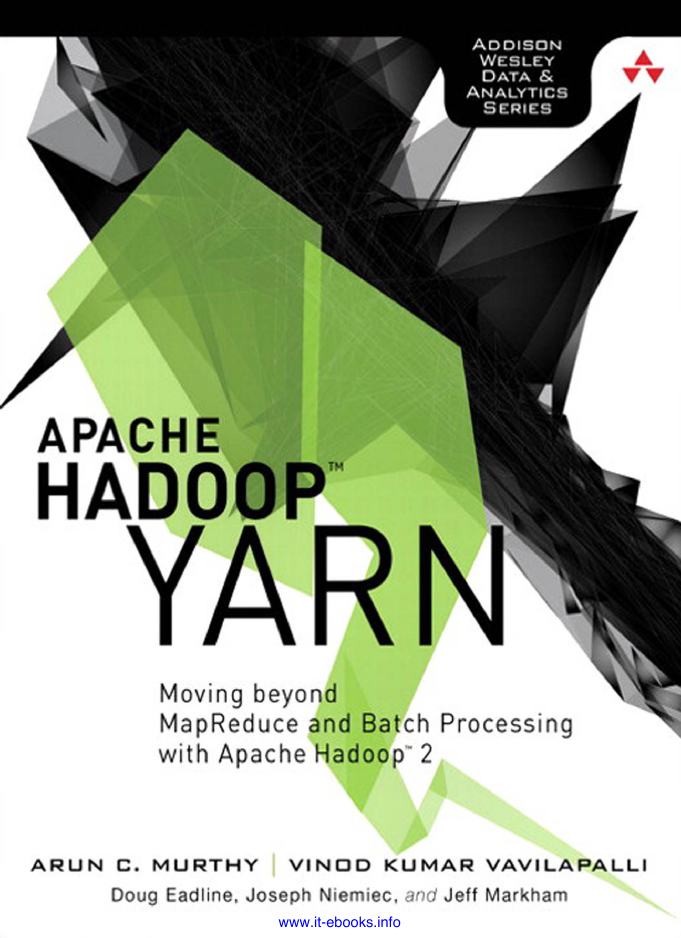
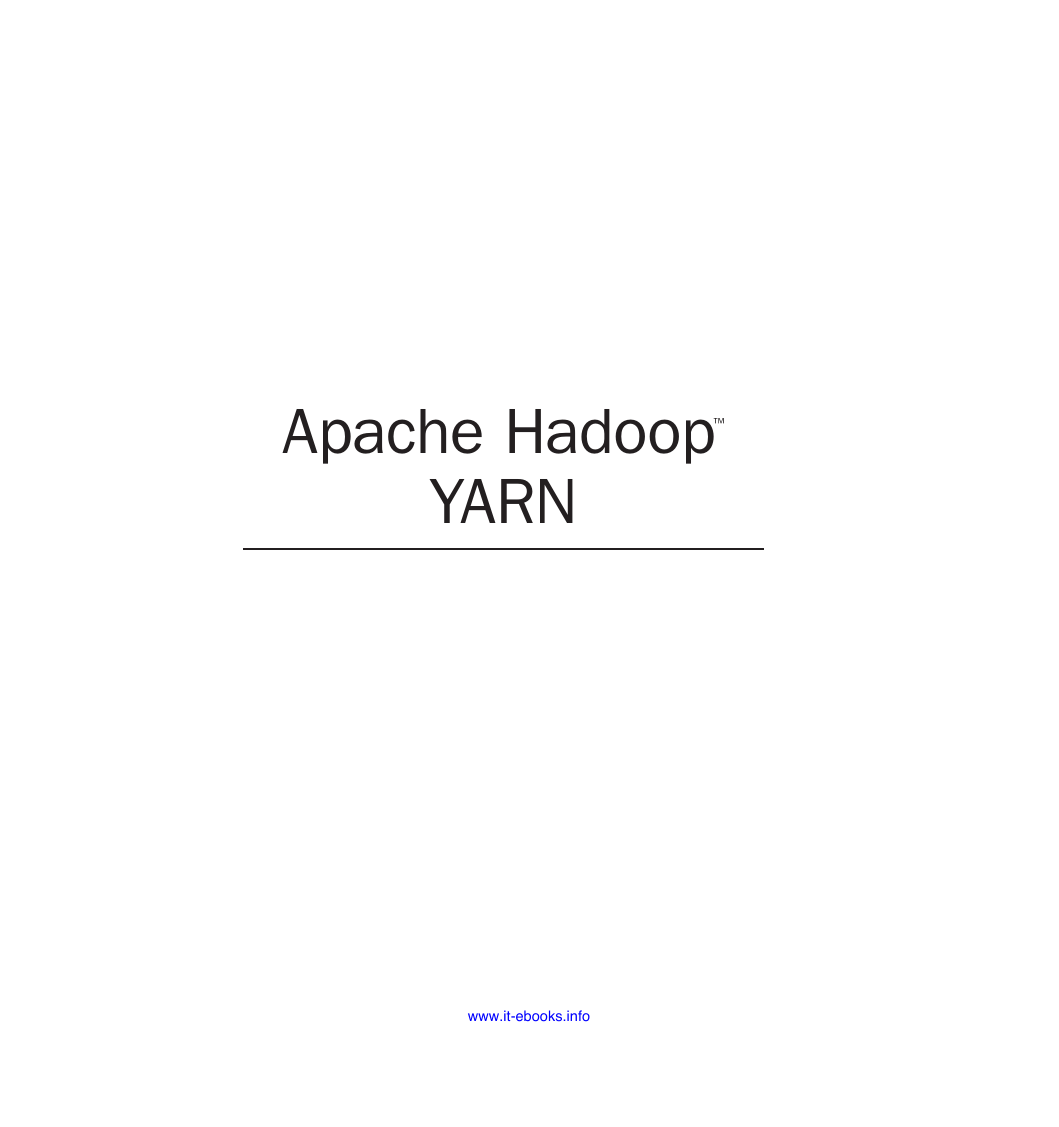
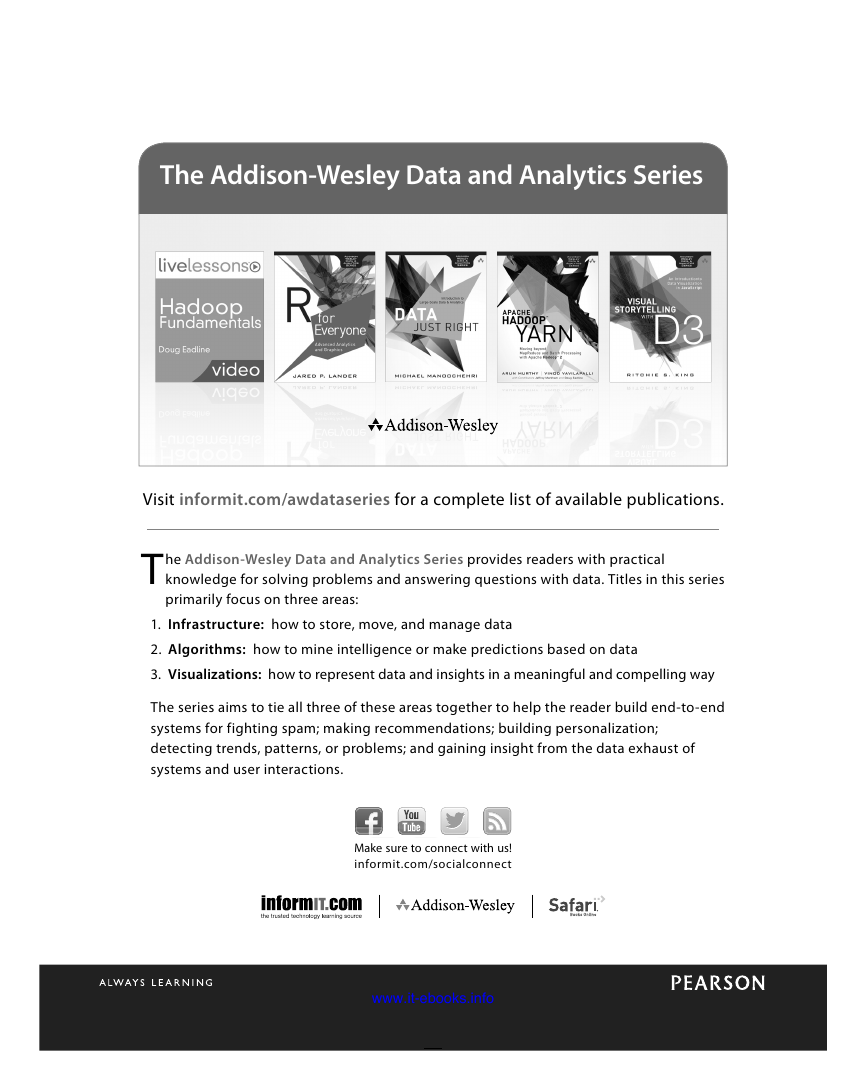
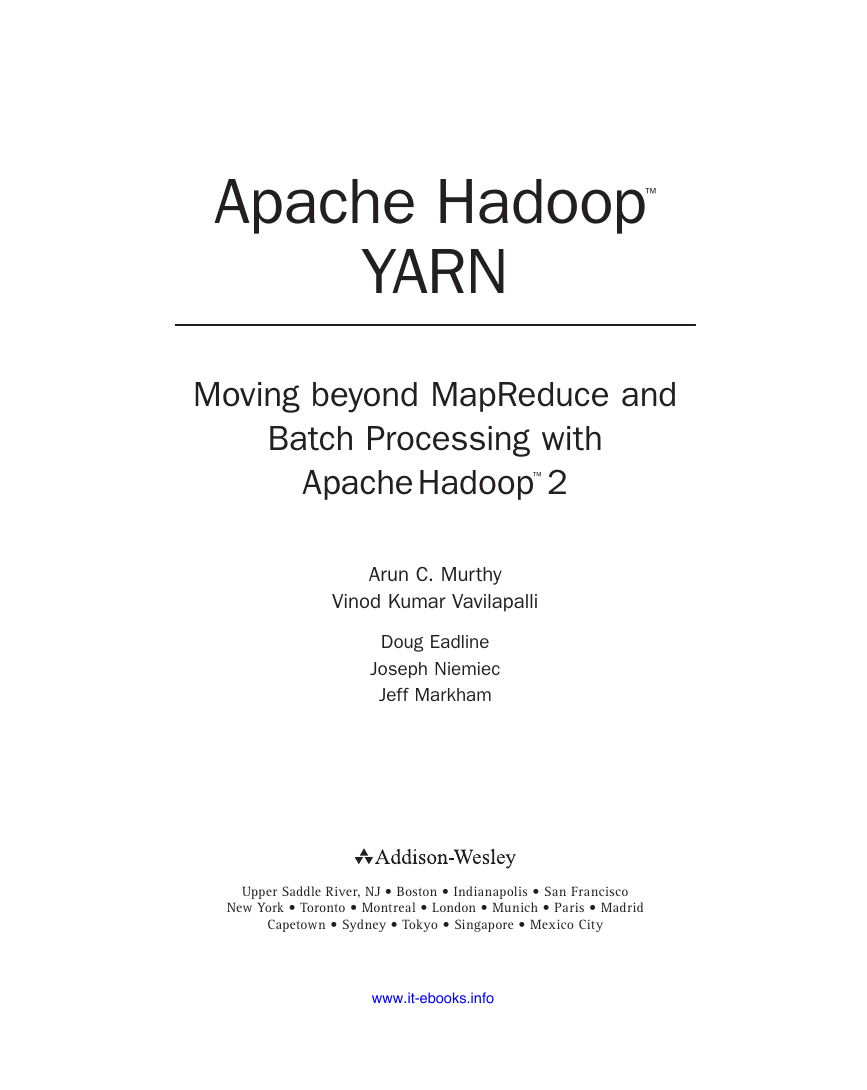

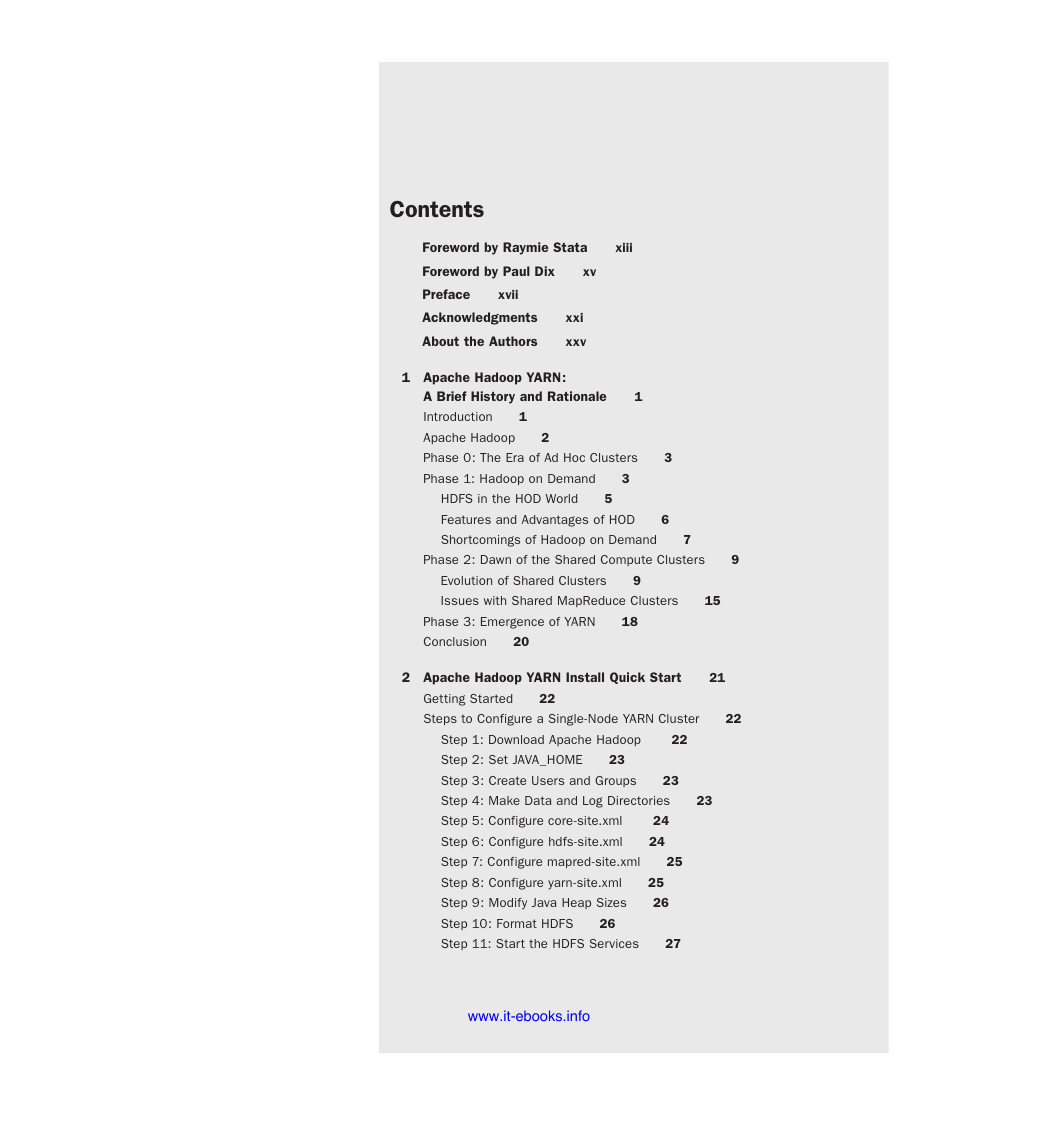
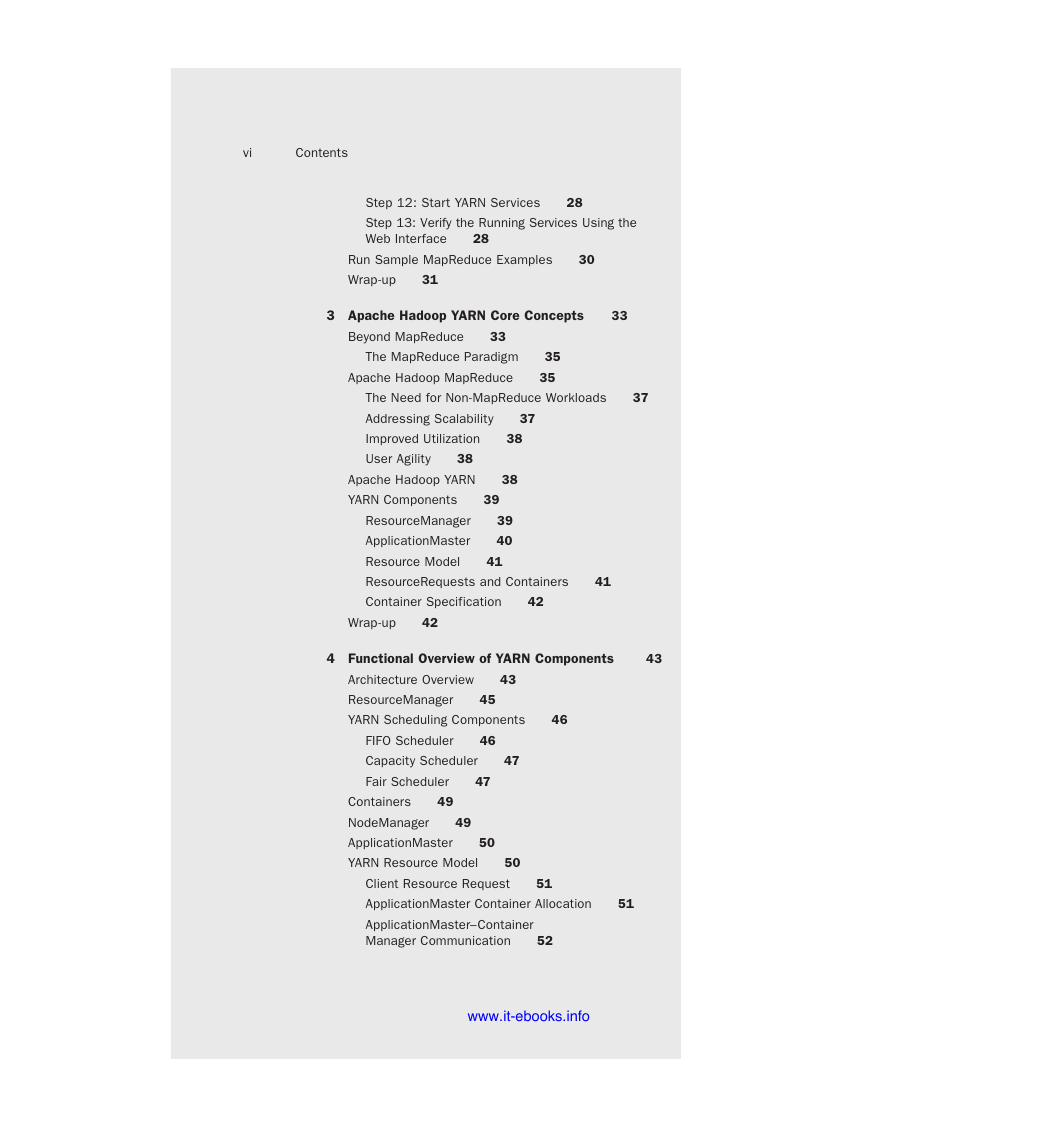
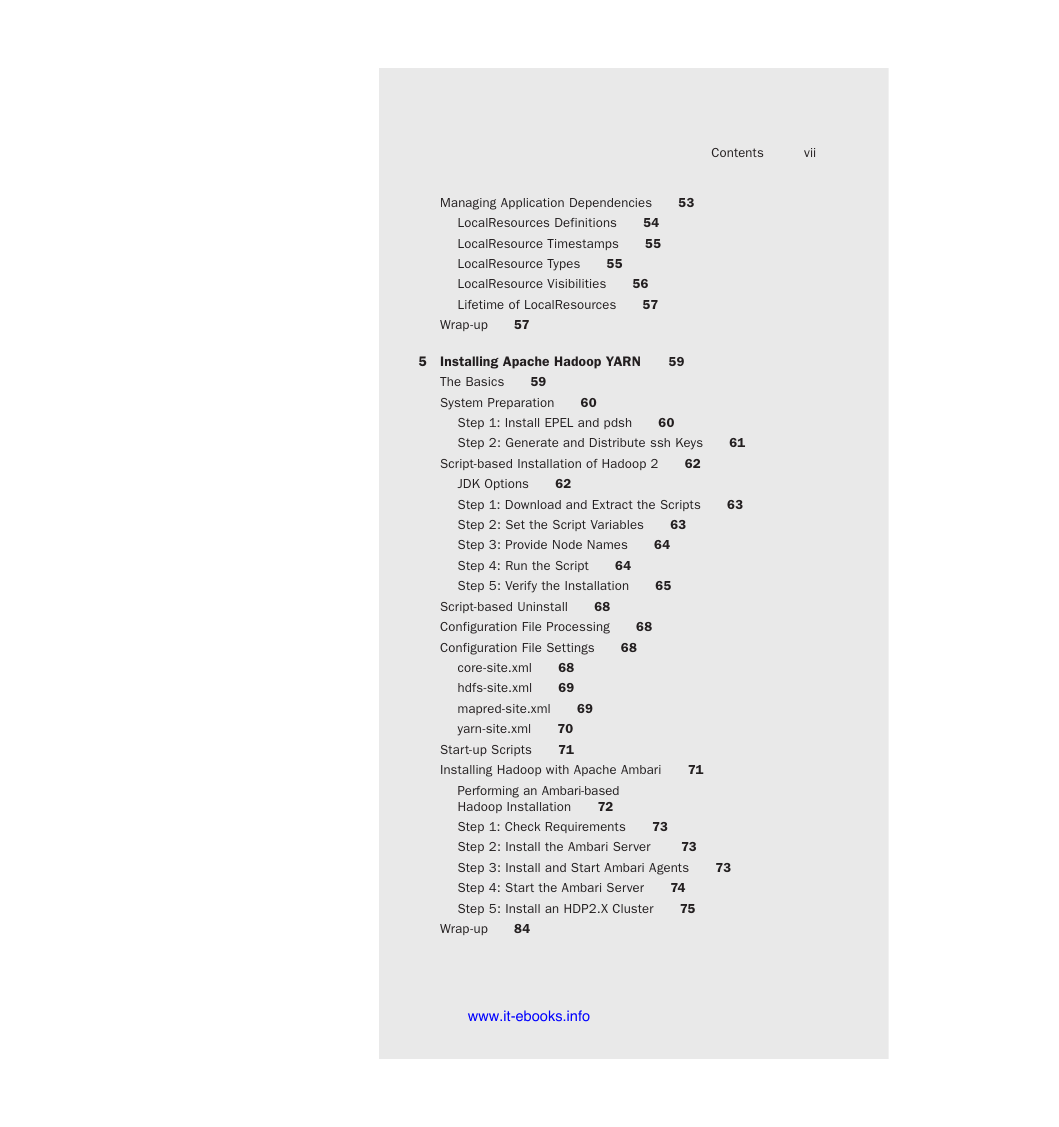








 2023年江西萍乡中考道德与法治真题及答案.doc
2023年江西萍乡中考道德与法治真题及答案.doc 2012年重庆南川中考生物真题及答案.doc
2012年重庆南川中考生物真题及答案.doc 2013年江西师范大学地理学综合及文艺理论基础考研真题.doc
2013年江西师范大学地理学综合及文艺理论基础考研真题.doc 2020年四川甘孜小升初语文真题及答案I卷.doc
2020年四川甘孜小升初语文真题及答案I卷.doc 2020年注册岩土工程师专业基础考试真题及答案.doc
2020年注册岩土工程师专业基础考试真题及答案.doc 2023-2024学年福建省厦门市九年级上学期数学月考试题及答案.doc
2023-2024学年福建省厦门市九年级上学期数学月考试题及答案.doc 2021-2022学年辽宁省沈阳市大东区九年级上学期语文期末试题及答案.doc
2021-2022学年辽宁省沈阳市大东区九年级上学期语文期末试题及答案.doc 2022-2023学年北京东城区初三第一学期物理期末试卷及答案.doc
2022-2023学年北京东城区初三第一学期物理期末试卷及答案.doc 2018上半年江西教师资格初中地理学科知识与教学能力真题及答案.doc
2018上半年江西教师资格初中地理学科知识与教学能力真题及答案.doc 2012年河北国家公务员申论考试真题及答案-省级.doc
2012年河北国家公务员申论考试真题及答案-省级.doc 2020-2021学年江苏省扬州市江都区邵樊片九年级上学期数学第一次质量检测试题及答案.doc
2020-2021学年江苏省扬州市江都区邵樊片九年级上学期数学第一次质量检测试题及答案.doc 2022下半年黑龙江教师资格证中学综合素质真题及答案.doc
2022下半年黑龙江教师资格证中学综合素质真题及答案.doc